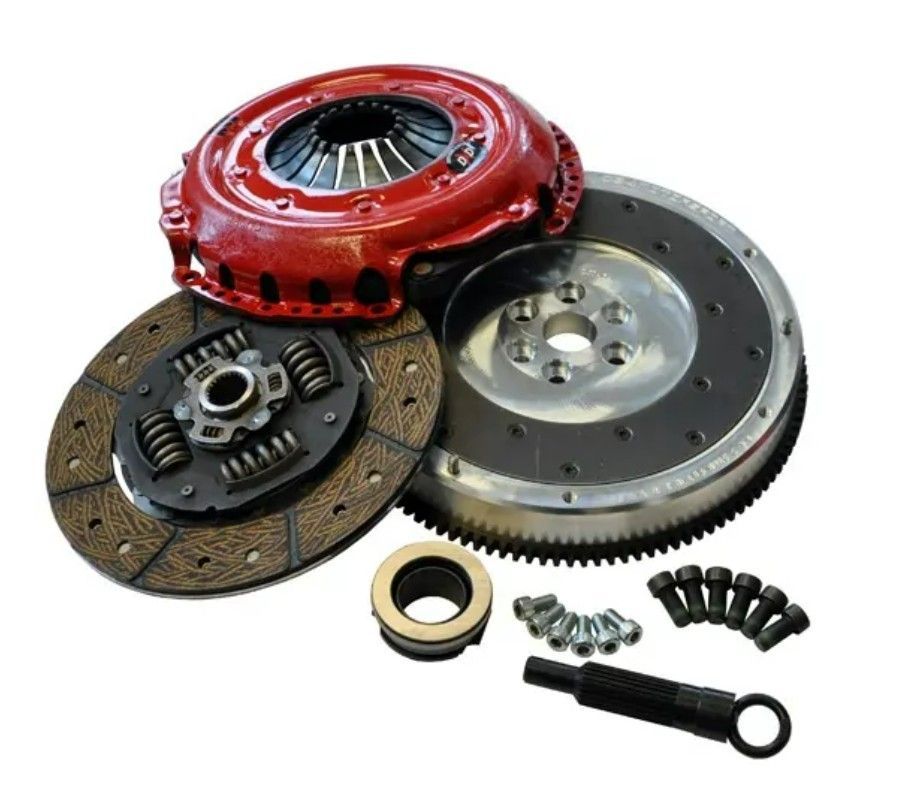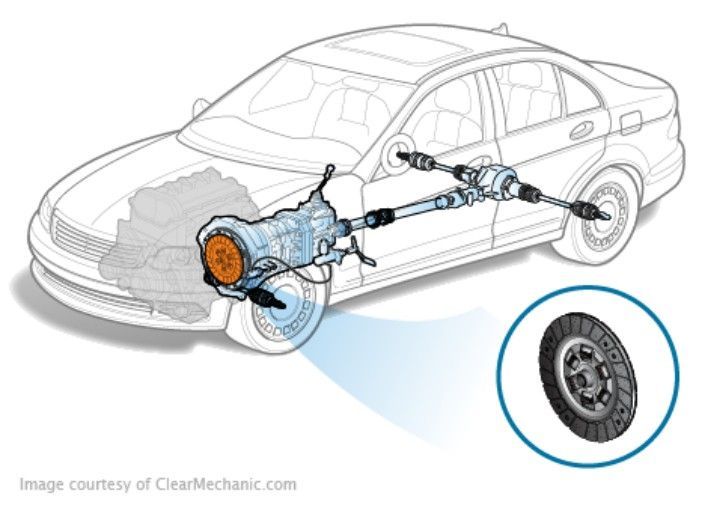What’s a Clutch?
NaTasha Brand • July 17, 2025
(Hint: It’s not a ladies hand held purse!)

Ah, the clutch—the mighty mite of manual transmissions and the bane of every new driver’s existence. If you’ve ever stalled out at a San Angelo stoplight (maybe on Chadbourne Street during rush hour?), you’ve had an intimate encounter with this crucial component. But what exactly is a clutch, how does it work, and why does it sometimes betray you at the worst possible moment? Buckle up, gearheads (and curious drivers)—we’re diving into the world of clutches.
What Is a Clutch?
In simple terms, a clutch is the middleman between your engine and transmission. It’s what allows you to shift gears smoothly (or, if you’re learning, not so smoothly). Without it, your car would either be permanently in gear (good luck stopping) or permanently out of gear (good luck going).
How Does a Clutch Work?
Think of the clutch like a sandwich—except instead of delicious fillings, it’s got friction. Here’s the breakdown:
1. Pressure Plate – The "bread" that clamps everything together.
2. Clutch Disc – The "meat" that grips the flywheel when engaged.
3. Flywheel – The spinning plate attached to the engine.
When you press the clutch pedal, you’re separating the disc from the flywheel, cutting power to the transmission so you can shift. Release the pedal, and the pressure plate smooshes everything back together, reconnecting engine power to the wheels.
What’s a Clutch Made Of?
Clutches are built tough to handle heat and friction. Most modern clutches use:
• Organic materials (like resin-bonded fibers) for smooth engagement.
• Ceramic or Kevlar in performance vehicles for extra durability.
• Metal springs and dampers to reduce vibration.
But even the toughest clutch wears out—especially if you’re riding it like a rodeo bull at the San Angelo Stock Show.
Symptoms of a Failing Clutch
How do you know your clutch is waving the white flag? Watch for:
✔ Slipping – Revs climb, but speed doesn’t? Your clutch is toast.
✔ Hard Shifting – Grinding gears? Not a good sign.
✔ Burning Smell – That’s the scent of expensive repairs.
✔ Spongy or Stiff Pedal – Could mean hydraulic issues or worn parts.
Why You Need a Pro to Fix It
Clutch replacement isn’t a DIY job unless you enjoy removing transmissions on your driveway in 100° Texas heat. At Ric Henry’s Auto Service, our expert techs handle clutch jobs with dealership-grade tools and precision. Plus, we back all our work with a 3-year/36,000-mile warranty—because we stand by our repairs.
So, if your clutch is acting up, don’t white-knuckle it through another gear grind. Let the pros at Ric Henry’s get you back on the road smoothly. After all, life’s too short for jerky shifts and stalling at Whataburger drive-thrus.


Here in San Angelo, our vehicles face it all: the dust of West Texas backroads, the blazing heat on Chadbourne Street, and the occasional surprise chill. Through it all, we trust our engines to get us to the Concho River or out to the lakes without a second thought. But deep within that trusted powerplant, a critical component might be slowly elongating, turning into a literal ticking time bomb. Let's talk about timing chain stretch, the silent engine killer. The Conductor of the Internal Combustion Orchestra First, what is this thing? Your timing chain (or belt, in some cars) is the mini maestro of your engine. It’s the critical link that synchronizes the rotation of the crankshaft (the part that goes up and down with the pistons) and the camshaft (the part that opens and closes the valves). This precise coordination ensures that fuel and air enter, combust, and exit at the exact right millisecond. When the timing is perfect, your engine purrs with efficiency and power. When it’s off, even slightly, the performance symphony descends into cacophony. The Slow Stretch: Causes & Symptoms Unlike a snapped timing belt which often causes catastrophic failure, a stretching chain is a master of deception. It doesn’t happen overnight. The primary culprits are: • Mileage & Wear : Simply put, everything has a service life. Over thousands of miles and millions of cycles, the chain's pins and bushings wear down. • Poor Lubrication : This is the big one. Old, sludgy oil or infrequent oil changes are public enemy #1 for your timing chain. The chain relies on a constant bath of clean engine oil for lubrication and cooling. In our Texas heat, oil can break down faster. Skipping an oil change isn't just about the oil itself; it's starving this vital component. • Faulty Tensioners : The chain tensioner’s job is to take up slack. When it fails, it allows excess movement, accelerating wear and stretch. So, how do you know your maestro is losing the beat? Listen and feel: • The Tell-Tale Rattle : A persistent rattling or clattering noise from the front of the engine, especially at startup or at low RPMs, is the classic harbinger. • Check Engine Light : The engine’s computer is precise. As timing drifts, it will often trigger codes related to cam/crank correlation. • Performance Woes : Sluggish acceleration, poor fuel economy, rough idling, or even misfires. The engine is literally out of sync. Why This Isn't a DIY Project for Your San Angelo Garage We get it. The DIY spirit is strong. But timing chain replacement is a deep-engine surgery. It requires: • Specialized tools (cam lock bars, crank holders) to lock the engine in time. • Meticulous disassembly, often involving the front of the engine. • Absolute precision in reassembly. Being one tooth off can lead to bent valves, damaged pistons, and an engine that won’t run, turning a repair into a replacement. This is a job where "close" isn't good enough. It requires the expertise and equipment of a seasoned professional. Your San Angelo Solution: Ric Henry’s Auto Service When the rattle starts and your engine’s timing is in question, you need a shop you can trust with the heart of your vehicle. At Ric Henry’s Auto Service, we treat timing chain jobs with the seriousness they deserve. Our experienced technicians are equipped with the same advanced tools and diagnostic equipment the dealerships use, ensuring a precise and reliable repair. We don’t just stop at the repair. We offer the comprehensive maintenance that prevents these issues, like routine oil changes with quality fluids tailored to our climate. And because we believe in our work and your peace of mind, every service we provide is backed by a strong 3-Year/36,000-Mile Warranty. Don’t let a stretched chain lead to a snapped budget. If you’re hearing unusual sounds from under the hood, trust the pros at Ric Henry’s to diagnose it accurately and fix it right the first time. Think of it this way: a timing chain replacement is far cheaper than a new engine. Let’s keep your engine's timing as perfect as a San Angelo sunset.




Share On: